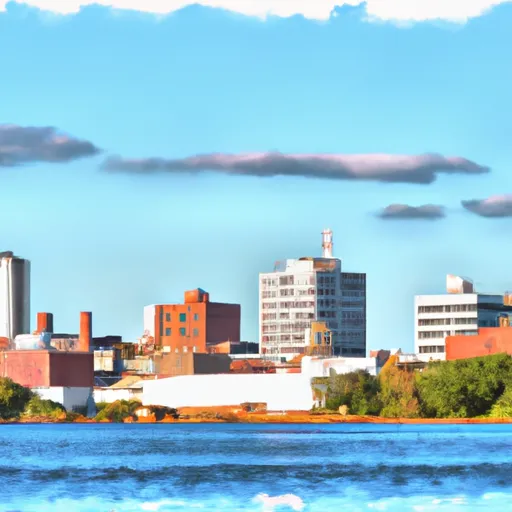-
 Snoflo Premium
Snoflo Premium
Get unlimited access to all our content
With no Ad interruptions! - Start Your Free Trial Login with existing account
South-Portland
Eden Index
Climate
8.2
•
Recreation
2.8
•
Community
4.3
•
Safeguard
5.3/10

South Portland, Maine is a charming city located on the southern coast of the state. It experiences a humid continental climate, characterized by warm summers and cold winters. Summers are typically mild with temperatures ranging from 70 to 80 degrees Fahrenheit, while winters are cold with temperatures ranging from 20 to 30 degrees Fahrenheit. Precipitation is evenly distributed throughout the year, with an average of 45 inches annually.
South Portland is bordered by the Atlantic Ocean, providing ample hydrology constituents. Its beautiful coastline boasts scenic beaches and harbor views. Outdoor enthusiasts can enjoy activities like swimming, boating, and fishing. The city is also home to the Fore River, which offers kayaking and paddleboarding opportunities.
Additionally, South Portland is known for its numerous parks and green spaces. The expansive Bug Light Park provides stunning views of the Portland skyline and is a popular spot for picnics and walking trails. Hinckley Park offers sports fields, playgrounds, and walking paths, while the expansive 55-acre Greenbelt Walkway provides a scenic route for walking, running, and biking.
Overall, South Portland, Maine offers a diverse range of outdoor recreation opportunities, making it an ideal destination for nature lovers and outdoor enthusiasts.
What is the Eden Index?
The Snoflo Eden Index serves as a comprehensive rating system for regions, evaluating their desirability through a holistic assessment of climate health, outdoor recreation opportunities, and natural disaster risk, acknowledging the profound impact of these factors on livability and well-being.
Climate Health Indicator (CHI): 8.2
South-Portland receives approximately
1217mm of rain per year,
with humidity levels near 78%
and air temperatures averaging around
8°C.
South-Portland has a plant hardyness factor of
5, meaning
plants and agriculture in this region thrive during a short period during spring and early summer. Most
plants will die off during the colder winter months.
By considering the ideal temperature range, reliable water supplies, clean air, and stable seasonal rain or snowpacks, the Climate Health Indicator (CHI) underscores the significance of a healthy climate as the foundation for quality living.
A healthy climate is paramount for ensuring a high quality of life and livability in a region, fostering both physical well-being and environmental harmony. This can be characterized by ideal temperatures, reliable access to water supplies, clean air, and consistent seasonal rain or snowpacks.
Weather Forecast
Streamflow Conditions
Saco
Area Rivers
Saco
Snowpack Depths
Saco
Reservoir Storage Capacity
Saco
Groundwater Levels
Recreational Opportunity Index (ROI): 2.8
The Recreational Opportunity Index (ROI) recognizes the value of outdoor recreational options, such as parks, hiking trails, camping sites, and fishing spots, while acknowledging that climate plays a pivotal role in ensuring the comfort and consistency of these experiences.
Access to outdoor recreational opportunities, encompassing activities such as parks, hiking, camping, and fishing, is crucial for overall well-being, and the climate plays a pivotal role in enabling and enhancing these experiences, ensuring that individuals can engage in nature-based activities comfortably and consistently.
Nearby Ski Areas
Catastrophe Safeguard Index (CSI):
The Catastrophe Safeguard Index (CSI) recognizes that natural disaster risk, encompassing floods, fires, hurricanes, and tornadoes, can drastically affect safety and the overall appeal of an area.
The level of natural disaster risk in a region significantly affects safety and the overall livability, with climate change amplifying these risks by potentially increasing the frequency and intensity of events like floods, fires, hurricanes, and tornadoes, thereby posing substantial challenges to community resilience and well-being.
Community Resilience Indicator (CRI): 4.3
The Community Resilience Indicator (CRI) recognizes that education, healthcare, and socioeconomics are crucial to the well-being of a region. The CRI acknowledges the profound impact of these elements on residents' overall quality of life. By evaluating educational resources, healthcare accessibility, and economic inclusivity, the index captures the essential aspects that contribute to a thriving community, fostering resident satisfaction, equity, and social cohesion.

